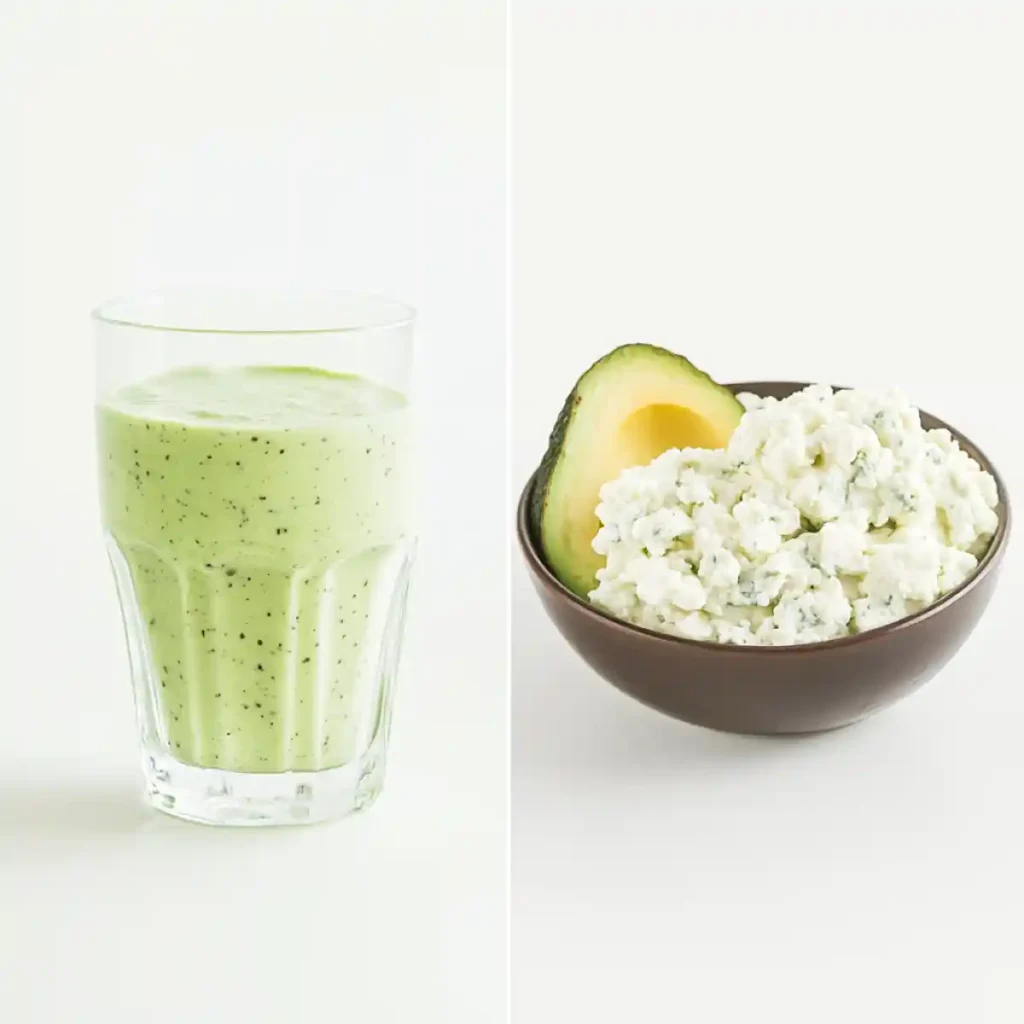Struggling to navigate the tricky transition from a bariatric liquid to a soft food diet? Trust me, I’ve been there—standing in my Boulder kitchen, staring at my herb garden (and my cat Miso eyeing the cheese), wondering how to make this phase both nourishing and satisfying. As a self-taught chef with a love for global comfort food, I’ve learned that the key is simplicity without sacrificing flavor. Whether you’re curious about the bariatric seed ritual recipe or need foolproof soft-food ideas, this guide breaks it all down. From timing tips to my favorite bariatric seed trick for overnight ease (hint: it involves pumpkin seeds and a little patience), let’s make this transition as smooth as my husband’s failed toast attempts. Ready? Let’s dig in.

Table of Contents
Table of Contents
What’s Allowed During Liquid Stage
If you’re fresh out of bariatric surgery, the liquid stage is your new best friend—even if it feels a little boring at first. Trust me, I get it. As someone who’s spent years in the kitchen (and survived my own post-surgery phases), I know how crucial this stage is for healing. Let’s cut to the chase: what can you actually eat without derailing progress?
Clear Liquids: The First 24-48 Hours
Right after surgery, your stomach needs gentle, fuss-free hydration. Stick to:
- Broth (chicken, beef, or veggie—just skip the chunks).
- Sugar-free gelatin (my daughter Sophie calls it “wiggly juice”).
- Herbal tea (unsweetened, lukewarm—my go-to is thyme-infused, thanks to my garden).
- Diluted apple juice (1/4 juice, 3/4 water to avoid sugar spikes).
Pro tip: Sip slowly. Chugging = discomfort (and nobody wants that).
Full Liquids: The Next Step (Days 3-7)
Once your doc gives the green light, you can graduate to thicker options. Here’s the hack: protein is your MVP. Aim for:
- Protein shakes (20-30g per serving, no added sugars). My favorite? Blend 1 scoop vanilla protein powder, 1 cup unsweetened almond milk, and a dash of cinnamon.
- Strained cream soups (think butternut squash or tomato—just no dairy if you’re lactose-sensitive).
- Greek yogurt thinned with water (plain, non-fat—add a drizzle of sugar-free syrup if you need sweetness).
But wait—there’s more! Ever heard of the bariatric seed ritual recipe? It’s not for this phase, but it’s coming soon—promise.
Blended/Puréed Liquids (Week 2-ish)
By now, you might be dreaming of something with texture. Enter:
- Thinned oatmeal (1/4 cup oats + 1 cup water, blended smooth).
- Cottage cheese puréed with broth (sounds weird, tastes like a creamy soup).
- Sugar-free pudding (made with protein milk for extra staying power).
Meanwhile, avoid:
- Carbonation (bye, soda bubbles—they stretch your pouch).
- Straws (sucking = air swallowing = ouch).
- Caffeine (dehydration risk—save the coffee for later).
When to Start Soft Foods
Okay, let’s talk timing. Jumping into soft foods too soon is like baking bread without preheating the oven—messy and disappointing. Most surgeons recommend 2-4 weeks post-op, but always check with your team first. Here’s how to know you’re ready:
Signs It’s Time to Transition
- No nausea when sipping liquids.
- Hunger cues return (but not the “eat a whole pizza” kind—more like gentle reminders).
- Energy levels stabilize (because protein shakes can only do so much).
The Golden Rules of Soft Foods
When you do transition, follow these guidelines like they’re your grandma’s secret gumbo recipe:
- Texture first: Think mashed potatoes, scrambled eggs, or ricotta bake. If it’s lumpy, blend it smoother.
- Protein priority: 60-80g daily. Soft foods like flaky fish, tofu, or refried beans (thinned with broth) are clutch.
- No raw veggies yet—steamed and puréed only. Your stomach’s still healing!
And hey, if you’re curious about the bariatric seed trick for weight loss, hold tight—we’re covering that next. (Spoiler: It involves pumpkin seeds and patience.)
Pro tip: Keep a food journal. Note what works (and what doesn’t)—just like I do with Sophie’s cookie experiments.
The more I simplified, the better I felt—and these natural weight loss recipes were a big part of that.
Transition Recipes to Try
Ready to graduate from liquids but not sure where to start? Let’s cut to the chase—soft foods shouldn’t be bland or boring. As someone who’s turned post-op meals into flavorful wins (even my parrot Kiwi tries to steal bites), I’ve got your back. Here are three foolproof transition recipes that’ll make your stomach (and taste buds) happy.
1. Creamy Mashed Cauliflower “Potatoes”
Why it works: Silky texture, high in vitamin C, and low-carb.
- 1 small head cauliflower, steamed until fork-tender
- 2 tbsp Greek yogurt (or lactose-free cream cheese)
- 1 tbsp grated Parmesan (optional, but worth it)
- Pinch of garlic powder (because flavor matters)
Blend until smooth. Pro tip: If it’s too thick, add a splash of bone broth for extra protein. Serve warm—this was my husband Daniel’s first “real” post-op meal, and he still requests it.
2. Egg Muffins with Spinach & Feta
Perfect for: Meal prep and protein-packed breakfasts.
- 4 eggs, whisked (or 1 cup liquid egg whites)
- 1/4 cup chopped spinach (steamed and squeezed dry)
- 2 tbsp crumbled feta (or cottage cheese for milder flavor)
- Dash of smoked paprika (my Creole grandma’s touch)
Pour into greased muffin tins and bake at 350°F for 15 minutes. These freeze beautifully—just reheat for 30 seconds.
3. Slow-Cooker Chicken & White Bean Purée
Hearty but safe: Fiber + protein in one cozy bowl.
- 1 boneless chicken breast, cooked and shredded
- 1/2 cup canned white beans, rinsed and drained
- 1 cup low-sodium chicken broth
- 1 tsp thyme (from my garden, naturally)
Simmer in a slow cooker for 2 hours, then blend to desired consistency. Think savory pudding—Sophie calls it “chicken dessert.”
My Favorite Overnight Option for Soft Stage
Confession: I’m not a morning person. That’s why the bariatric seed ritual is my ultimate gut-friendly breakfast hack. Here’s the gist:
Each seed plays a specific role:
- Chia seeds (2 tbsp): Expand into a pudding-like base (10g fiber/oz).
- Flaxseeds (1 tbsp, ground): For omega-3s—always grind them!
- Pumpkin seeds (1 tbsp): Magnesium-rich crunch.
- Hemp hearts (1 tbsp): Plant-based protein powerhouse.
Combine with almond milk, cinnamon, and a drizzle of honey (or sugar-free syrup), then let it sit overnight. By morning, you’ve got a no-cook, nutrient-dense meal that keeps you full for hours.
Want the full bariatric seed ritual recipe with exact measurements and my grandma’s vanilla trick? Click here for the step-by-step guide. (Yes, it’s worth the wait—even Miso the cheese-thieving cat approves.)
Pro tip: Double the batch and store in jars for grab-and-go mornings. Your future self will thank you!
FAQs: Timing, Risks, and Tips
Got questions about transitioning between bariatric diet stages? Here are quick answers to the most common concerns:
When to Try the Bariatric Seed Ritual?
Most patients can safely try this around weeks 3-4 post-op. Start with half portions (1 tbsp chia + ½ cup liquid) and check with your surgeon first.
Key Transition Risks
- Dehydration: Sip 64oz daily (herbal tea counts!)
- Dumping syndrome: Avoid sugars
- Stomach stretching: Use teaspoons, no gulping
Customizing Your Seed Mix
- Add collagen powder for protein
- Try cocoa powder instead of cinnamon
- Always grind flaxseeds
- Avoid dairy milk early on
Protein Tracking Basics
Aim for 60-80g daily during soft foods:
- 1 egg = 6g
- ¼ cup ricotta = 7g
- 2 tbsp hemp hearts = 6g
Quick Food Rut Fixes
- Repurpose proteins (chicken→salad)
- Blend cottage cheese with SF pudding
- Refresh dishes with fresh herbs
Pro tip: Freeze single-serve portions in muffin tins for easy meals!
